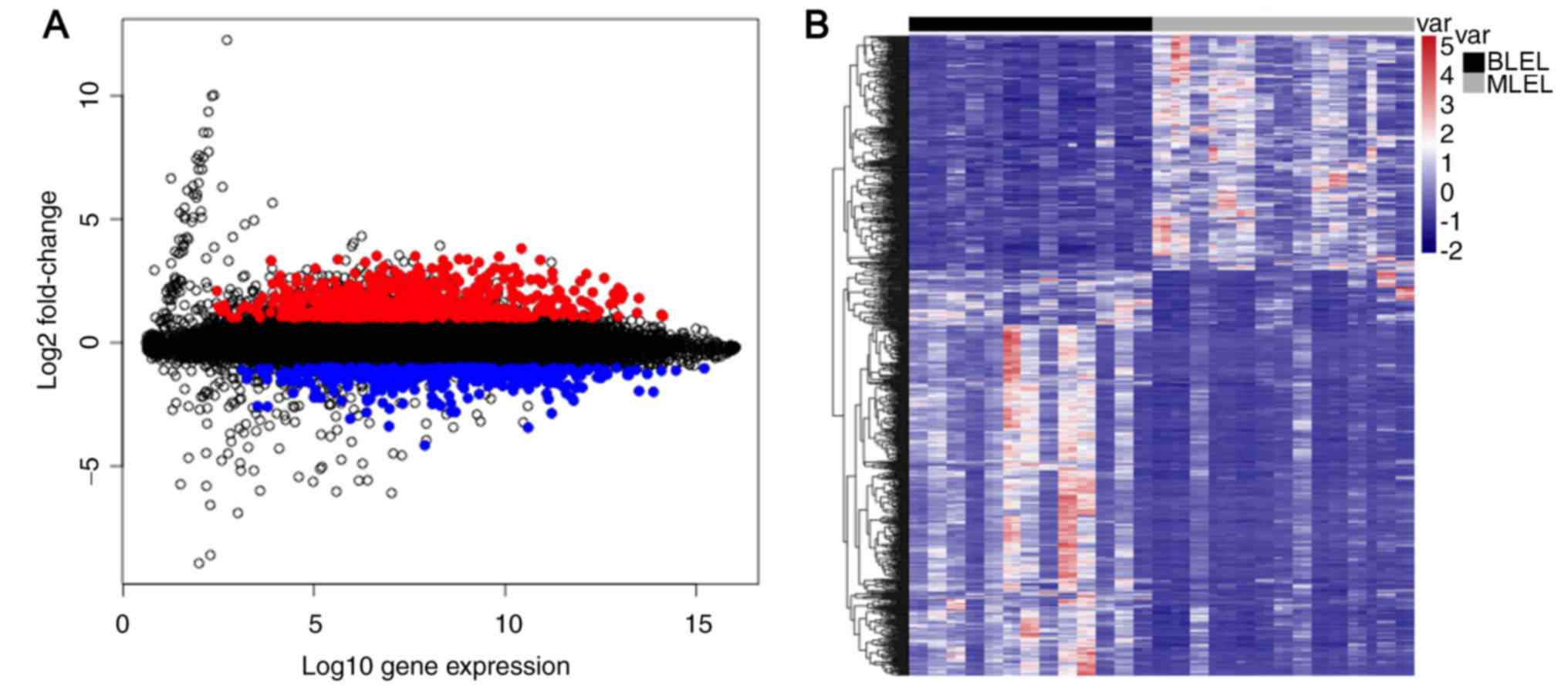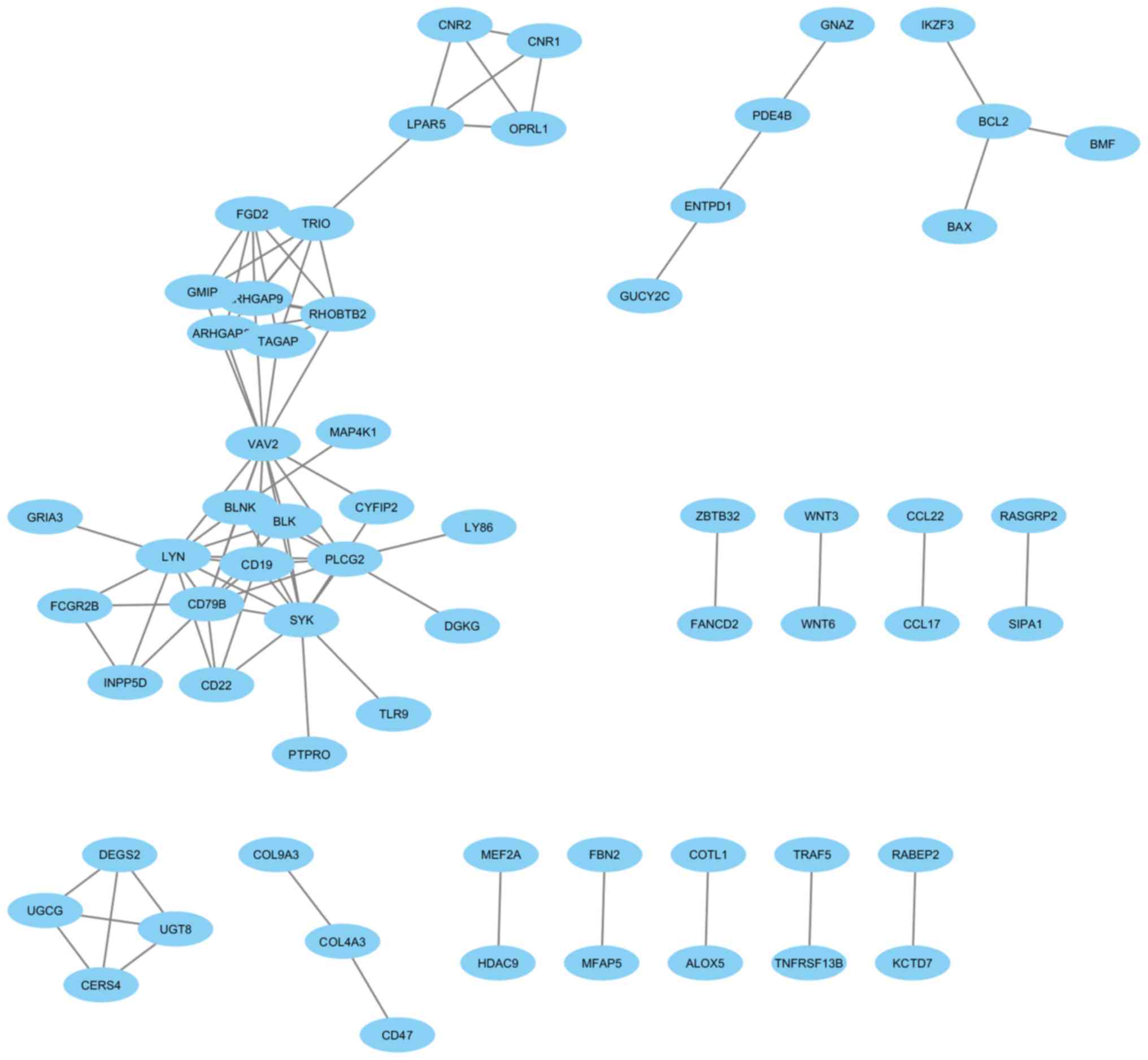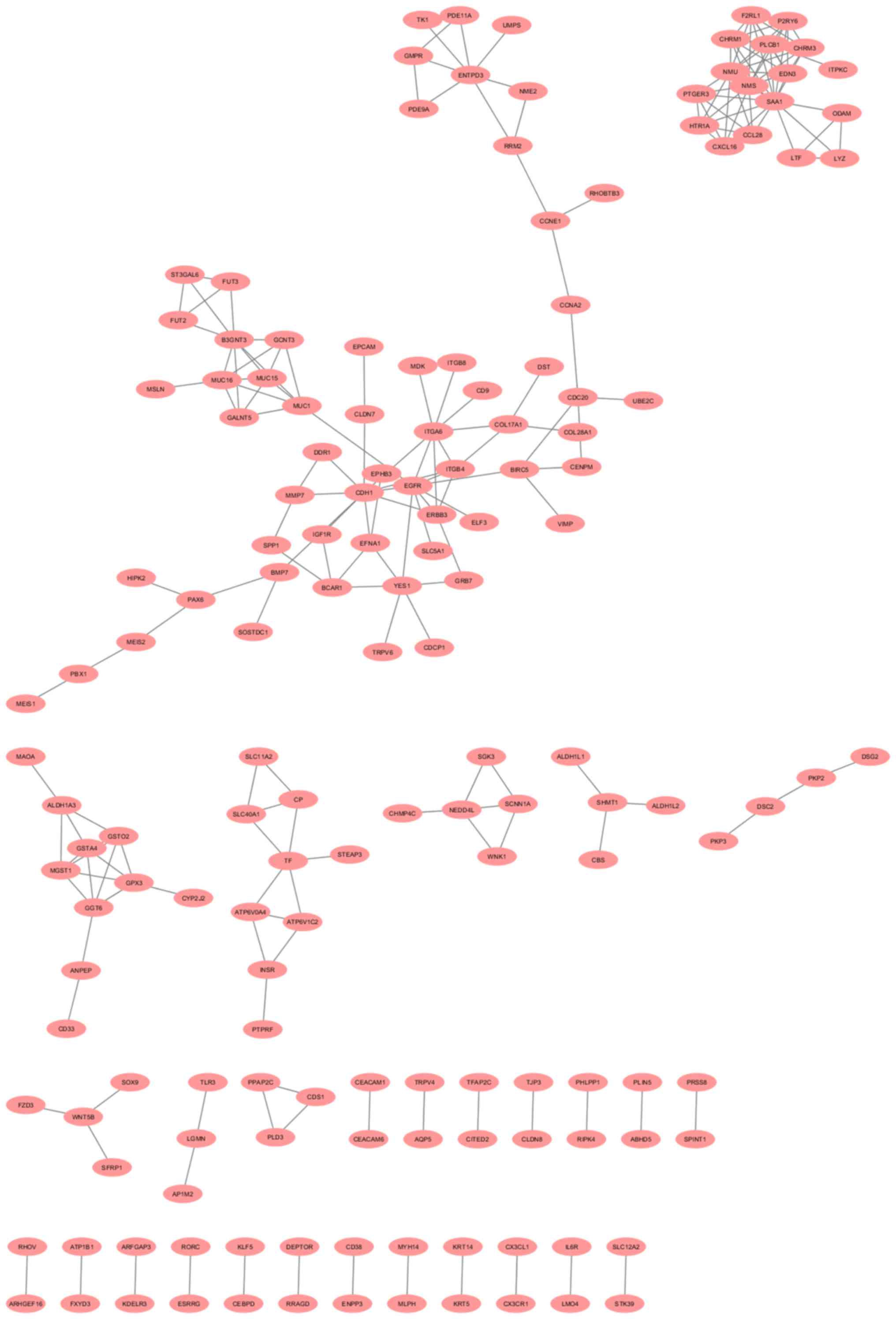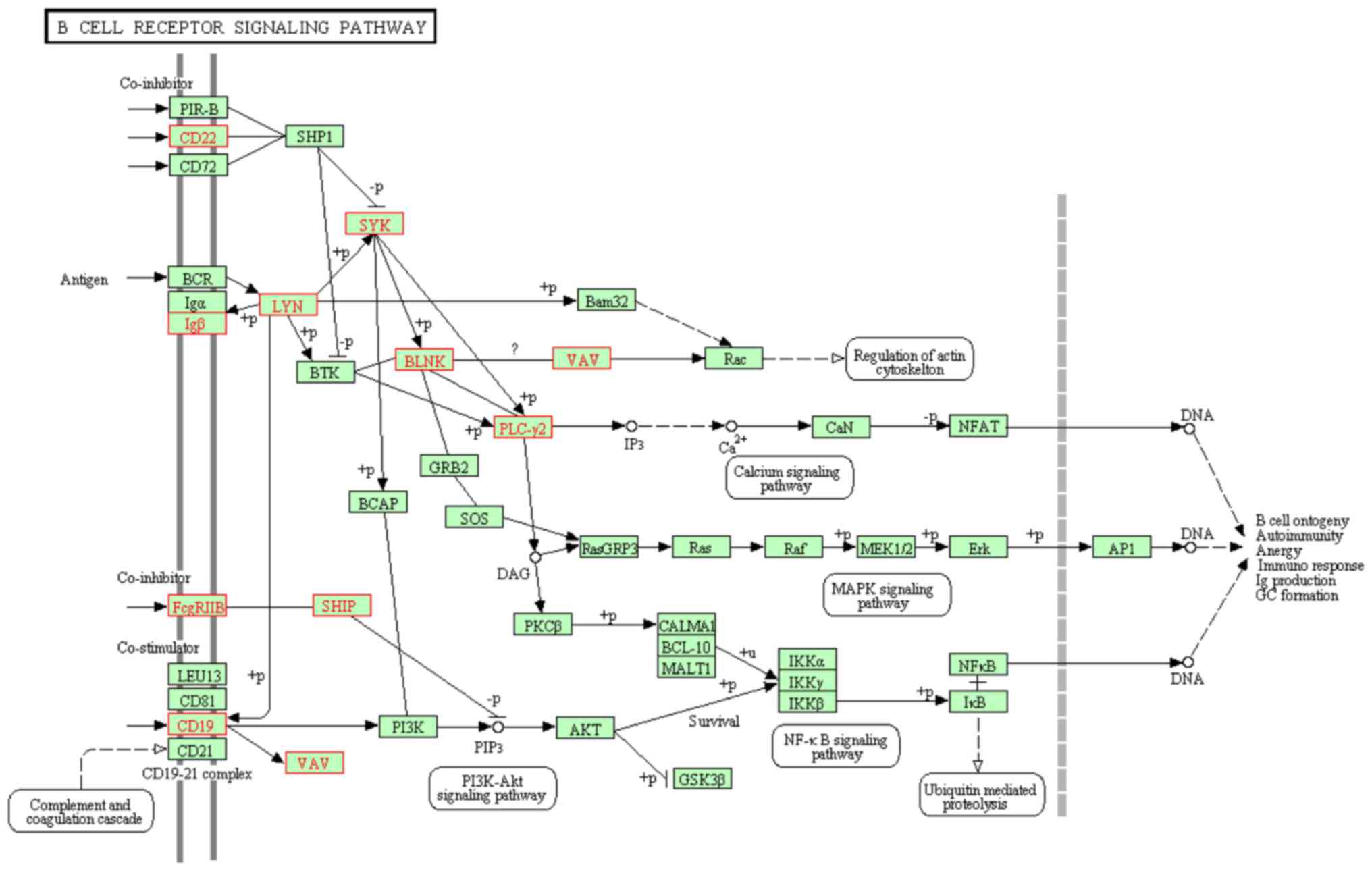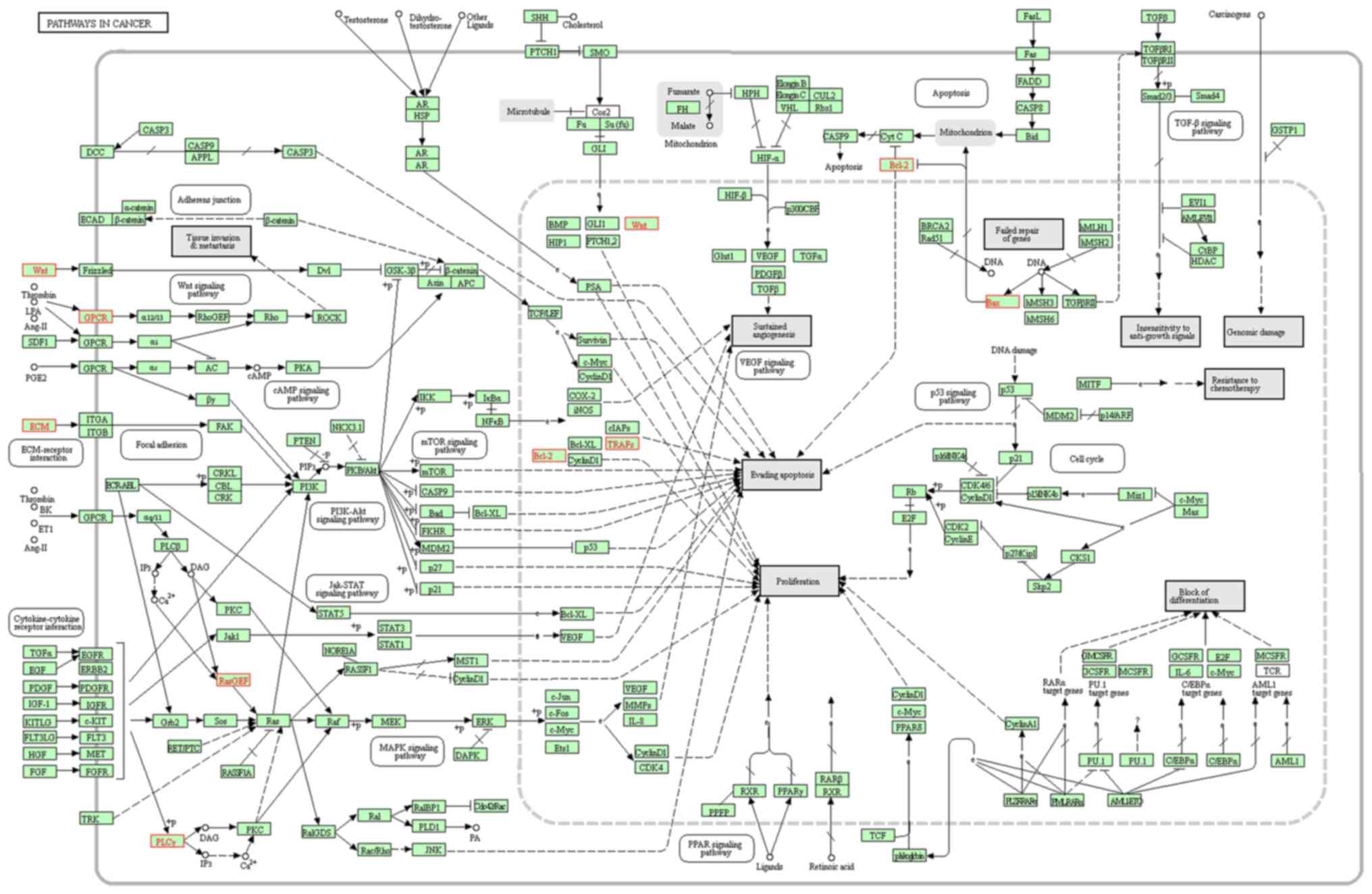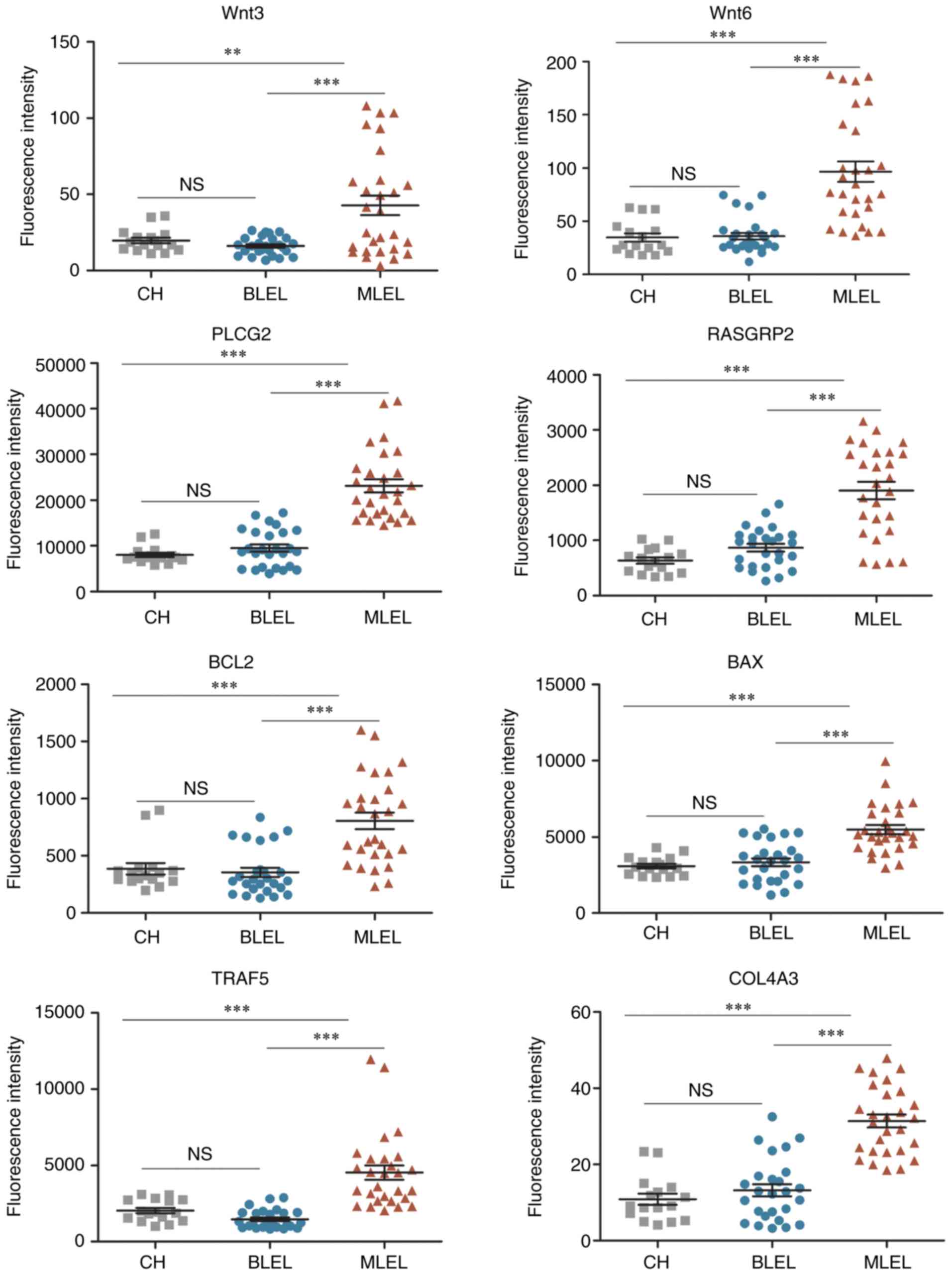|
1
|
Yamamoto M, Takahashi H, Sugai S and Imai
K: Clinical and pathological characteristics of Mikulicz's disease
(IgG4-related plasmacytic exocrinopathy). Autoimmun Rev. 4:195–200.
2005. View Article : Google Scholar : PubMed/NCBI
|
|
2
|
Yamamoto M, Takahashi H, Ohara M, Suzuki
C, Naishiro Y, Yamamoto H, Shinomura Y and Imai K: A new
conceptualization for Mikulicz's disease as an IgG4-related
plasmacytic disease. Mod Rheumatol. 16:335–340. 2006. View Article : Google Scholar : PubMed/NCBI
|
|
3
|
Stone JH, Zen Y and Deshpande V:
IgG4-related disease. N Engl J Med. 366:539–551. 2012. View Article : Google Scholar : PubMed/NCBI
|
|
4
|
Yamamoto M, Takahashi H, Tabeya T, Suzuki
C, Naishiro Y, Ishigami K, Yajima H, Shimizu Y, Obara M, Yamamoto
H, et al: Risk of malignancies in IgG4-related disease. Mod
Rheumatol. 22:414–418. 2012. View Article : Google Scholar : PubMed/NCBI
|
|
5
|
Sato Y, Ohshima K, Ichimura K, Sato M,
Yamadori I, Tanaka T, Takata K, Morito T, Kondo E and Yoshino T:
Ocular adnexal IgG4-related disease has uniform clinicopathology.
Pathol Int. 58:465–470. 2008. View Article : Google Scholar : PubMed/NCBI
|
|
6
|
Go H, Kim JE, Kim YA, Chung HK, Khwarg SI,
Kim CW and Jeon YK: Ocular adnexal IgG4-related disease:
Comparative analysis with mucosa-associated lymphoid tissue
lymphoma and other chronic inflammatory conditions. Histopathology.
60:296–312. 2012. View Article : Google Scholar : PubMed/NCBI
|
|
7
|
Azzopardi JG and Evans DJ: Malignant
lymphoma of parotid associated with Mikulicz disease (benign
lymphoepithelial lesion). J Clin Pathol. 24:744–752. 1971.
View Article : Google Scholar : PubMed/NCBI
|
|
8
|
Del Bono V, Pretolesi F, Pontali E,
Martinoli C, Bassetti M, Mazzarello G, Chiaramondia M, Derchi LE
and Bassetti D: Possible malignant transformation of benign
lymphoepithelial parotid lesions in human immunodeficiency
virus-infected patients: Report of three cases. Clin Infect Dis.
30:947–949. 2000. View
Article : Google Scholar : PubMed/NCBI
|
|
9
|
Sato K, Kawana M, Sato Y and Takahashi S:
Malignant lymphoma in the head and neck associated with benign
lymphoepithelial lesion of the parotid gland. Auris Nasus Larynx.
29:209–214. 2002. View Article : Google Scholar : PubMed/NCBI
|
|
10
|
Ohta M, Moriyama M, Goto Y, Kawano S,
Tanaka A, Maehara T, Furukawa S, Hayashida JN, Kiyoshima T, Shimizu
M, et al: A case of marginal zone B cell lymphoma mimicking
IgG4-related dacryoadenitis and sialoadenitis. World J Surg Oncol.
13:672015. View Article : Google Scholar : PubMed/NCBI
|
|
11
|
Ohno K, Sato Y, Ohshima K, Takata K,
Miyata-Takata T, Takeuchi M, Gion Y, Tachibana T, Orita Y, Ito T,
et al: A subset of ocular adnexal marginal zone lymphomas may arise
in association with IgG4-related disease. Sci Rep. 5:135392015.
View Article : Google Scholar : PubMed/NCBI
|
|
12
|
Li C and Hung Wong W: Model-based analysis
of oligonucleotide arrays: Model validation, design issues and
standard error application. Genome Biol. 2:Research00322001.
View Article : Google Scholar : PubMed/NCBI
|
|
13
|
Lv J, Zhu B, Zhang L, Xie Q and Zhuo W:
Detection and screening of small molecule agents for overcoming
Sorafenib resistance of hepatocellular carcinoma: A bioinformatics
study. Int J Clin Exp Med. 8:2317–2325. 2015.PubMed/NCBI
|
|
14
|
Golub TR, Slonim DK, Tamayo P, Huard C,
Gaasenbeek M, Mesirov JP, Coller H, Loh ML, Downing JR, Caligiuri
MA, et al: Molecular classification of cancer: Class discovery and
class prediction by gene expression monitoring. Science.
286:531–537. 1999. View Article : Google Scholar : PubMed/NCBI
|
|
15
|
Bullinger L, Dohner K, Bair E, Fröhling S,
Schlenk RF, Tibshirani R, Döhner H and Pollack JR: Use of
gene-expression profiling to identify prognostic subclasses in
adult acute myeloid leukemia. N Engl J Med. 350:1605–1616. 2004.
View Article : Google Scholar : PubMed/NCBI
|
|
16
|
Valk PJ, Verhaak RG, Beijen MA, Erpelinck
CA, Barjesteh van Waalwijk van Doorn-Khosrovani S, Boer JM,
Beverloo HB, Moorhouse MJ, van der Spek PJ, Löwenberg B and Delwel
R: Prognostically useful gene-expression profiles in acute myeloid
leukemia. N Engl J Med. 350:1617–1628. 2004. View Article : Google Scholar : PubMed/NCBI
|
|
17
|
Raponi M, Lancet JE, Fan H, Dossey L, Lee
G, Gojo I, Feldman EJ, Gotlib J, Morris LE, Greenberg PL, et al: A
2-gene classifier for predicting response to the farnesy
ltransferase inhibitor tipifarnib in acute myeloid leukemia. Blood.
111:2589–2596. 2008. View Article : Google Scholar : PubMed/NCBI
|
|
18
|
Kohlmann A, Bullinger L, Thiede C, Schaich
M, Schnittger S, Döhner K, Dugas M, Klein HU, Döhner H, Ehninger G
and Haferlach T: Gene expression profiling in AML with normal
karyotype can predict mutations for molecular markers and allows
novel insights into perturbed biological pathways. Leukemia.
24:1216–1220. 2010. View Article : Google Scholar : PubMed/NCBI
|
|
19
|
Theilgaard-Mönch K, Boultwood J, Ferrari
S, Giannopoulos K, Hernandez-Rivas JM, Kohlmann A, Morgan M, Porse
B, Tagliafico E, Zwaan CM, et al: Gene expression profiling in MDS
and AML: Potential and future avenues. Leukemia. 25:909–920. 2011.
View Article : Google Scholar : PubMed/NCBI
|
|
20
|
Safari-Alighiarloo N, Taghizadeh M,
Rezaei-Tavirani M, Goliaei B and Peyvandi AA: Protein-protein
interaction networks (PPI) and complex diseases. Gastroenterol
Hepatol Bed Bench. 7:17–31. 2014.PubMed/NCBI
|
|
21
|
Elinav E, Nowarski R, Thaiss CA, Hu B, Jin
C and Flavell RA: Inflammation-induced cancer: Crosstalk between
tumours, immune cells and microorganisms. Nat Rev Cancer.
13:759–771. 2013. View
Article : Google Scholar : PubMed/NCBI
|
|
22
|
Niemann CU and Wiestner A: B-cell receptor
signaling as a driver of lymphoma development and evolution. Semin
Cancer Biol. 23:410–421. 2013. View Article : Google Scholar : PubMed/NCBI
|
|
23
|
Refaeli Y, Young RM, Turner BC, Duda J,
Field KA and Bishop JM: The B cell antigen receptor and
overexpression of MYC can cooperate in the genesis of B cell
lymphomas. PLoS Biol. 6:e1522008. View Article : Google Scholar : PubMed/NCBI
|
|
24
|
Kim JH, Kim WS, Ryu K, Kim SJ and Park C:
CD79B limits response of diffuse large B cell lymphoma to
ibrutinib. Leuk Lymphoma. 57:1413–1422. 2016. View Article : Google Scholar : PubMed/NCBI
|
|
25
|
Cragg MS, Chan HT, Fox MD, Tutt A, Smith
A, Oscier DG, Hamblin TJ and Glennie MJ: The alternative transcript
of CD79b is overexpressed in B-CLL and inhibits signaling for
apoptosis. Blood. 100:3068–3076. 2002. View Article : Google Scholar : PubMed/NCBI
|
|
26
|
Chung EY, Psathas JN, Yu D, Li Y, Weiss MJ
and Thomas-Tikhonenko A: CD19 is a major B cell
receptor-independent activator of MYC-driven B-lymphomagenesis. J
Clin Invest. 122:2257–2266. 2012. View
Article : Google Scholar : PubMed/NCBI
|
|
27
|
Li X, Ding Y, Zi M, Sun L, Zhang W, Chen S
and Xu Y: CD19, from bench to bedside. Immunol lett. 183:86–95.
2017. View Article : Google Scholar : PubMed/NCBI
|
|
28
|
Poe JC, Minard-Colin V, Kountikov EI, Haas
KM and Tedder TF: A c-Myc and surface CD19 signaling amplification
loop promotes B cell lymphoma development and progression in mice.
J Immunol. 189:2318–2325. 2012. View Article : Google Scholar : PubMed/NCBI
|
|
29
|
Lu SC: Regulation of glutathione
synthesis. Mol Aspects Med. 30:42–59. 2009. View Article : Google Scholar : PubMed/NCBI
|
|
30
|
Morrison KE, Mariyama M, Yang-Feng TL and
Reeders ST: Sequence and localization of a partial cDNA encoding
the human alpha 3 chain of type IV collagen. Am J Hum Genet.
49:545–554. 1991.PubMed/NCBI
|
|
31
|
Nie XC, Wang JP, Zhu W, Xu XY, Xing YN, Yu
M, Liu YP, Takano Y and Zheng HC: COL4A3 expression correlates with
pathogenesis, pathologic behaviors and prognosis of gastric
carcinomas. Hum Pathol. 44:77–86. 2013. View Article : Google Scholar : PubMed/NCBI
|
|
32
|
Jiang CP, Wu BH, Chen SP, Fu MY, Yang M,
Liu F and Wang BQ: High COL4A3 expression correlates with poor
prognosis after cisplatin plus gemcitabine chemotherapy in
non-small cell lung cancer. Tumour Biol. 34:415–420. 2013.
View Article : Google Scholar : PubMed/NCBI
|
|
33
|
Nakashima N, Liu D, Huang CL, Ueno M,
Zhang X and Yokomise H: Wnt3 gene expression promotes tumor
progression in non-small cell lung cancer. Lung cancer. 76:228–234.
2012. View Article : Google Scholar : PubMed/NCBI
|
|
34
|
Zhang L, Yuan G, Fang Y, Qiu M, Lin J, Sun
J and Yang D: Increased WNT6 expression in tumor cells predicts
unfavorable survival in esophageal squamous cell carcinoma
patients. Int J Clin Exp Pathol. 8:11421–11427. 2015.PubMed/NCBI
|
|
35
|
Kaluzki I, Hrgovic I, Hailemariam-Jahn T,
Doll M, Kleemann J, Valesky EM, Kippenberger S, Kaufmann R, Zoeller
N and Meissner M: Dimethylfumarate inhibits melanoma cell
proliferation via p21 and p53 induction and bcl-2 and cyclin B1
downregulation. Tumour Biol. 37:13627–13635. 2016. View Article : Google Scholar : PubMed/NCBI
|
|
36
|
Bajwa N, Liao C and Nikolovska-Coleska Z:
Inhibitors of the anti-apoptotic Bcl-2 proteins: A patent review.
Expert Opin Ther Pat. 22:37–55. 2012. View Article : Google Scholar : PubMed/NCBI
|
|
37
|
Yin XM, Oltvai ZN and Korsmeyer SJ: BH1
and BH2 domains of Bcl-2 are required for inhibition of apoptosis
and heterodimerization with Bax. Nature. 369:321–323. 1994.
View Article : Google Scholar : PubMed/NCBI
|
|
38
|
Mühlbeier DF, Saddi VA, de Paula ÉC, Cunha
IW, Fregnani JH, Barbosa MA and Manoel WJ: Prognostic Significance
of Apoptosis-related Markers in Patients With Soft-Tissue Sarcomas
of Extremities. Appl Immunohistochem Mol Morphol. 24:268–274. 2016.
View Article : Google Scholar : PubMed/NCBI
|
|
39
|
Takino J, Nagamine K and Hori T: Ras
guanyl nucleotide releasing protein 2 affects cell viability and
cell-matrix adhesion in ECV304 endothelial cells. Cell Adh Migr.
7:262–266. 2013. View Article : Google Scholar : PubMed/NCBI
|



